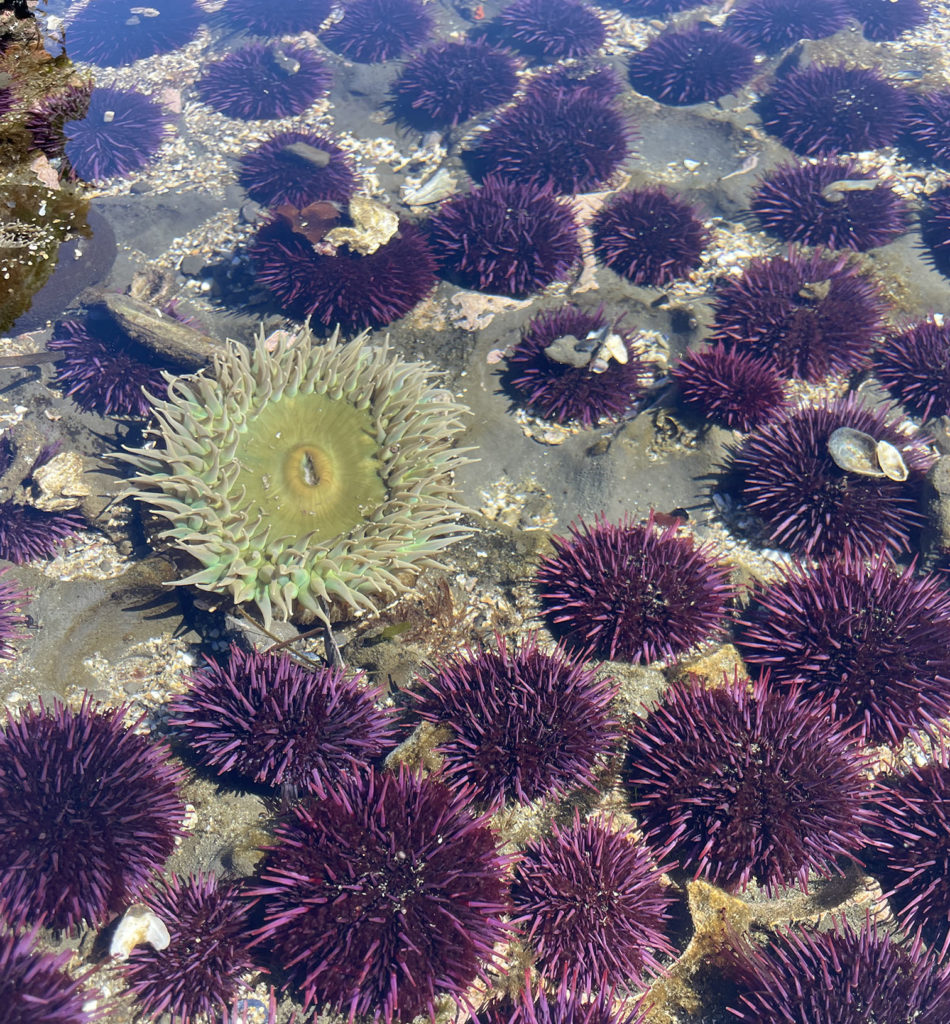
On our most recent road trip, we traveled along the coast of Oregon with the goal of visiting tide pools. A combination of luck and planning made this such a successful adventure!
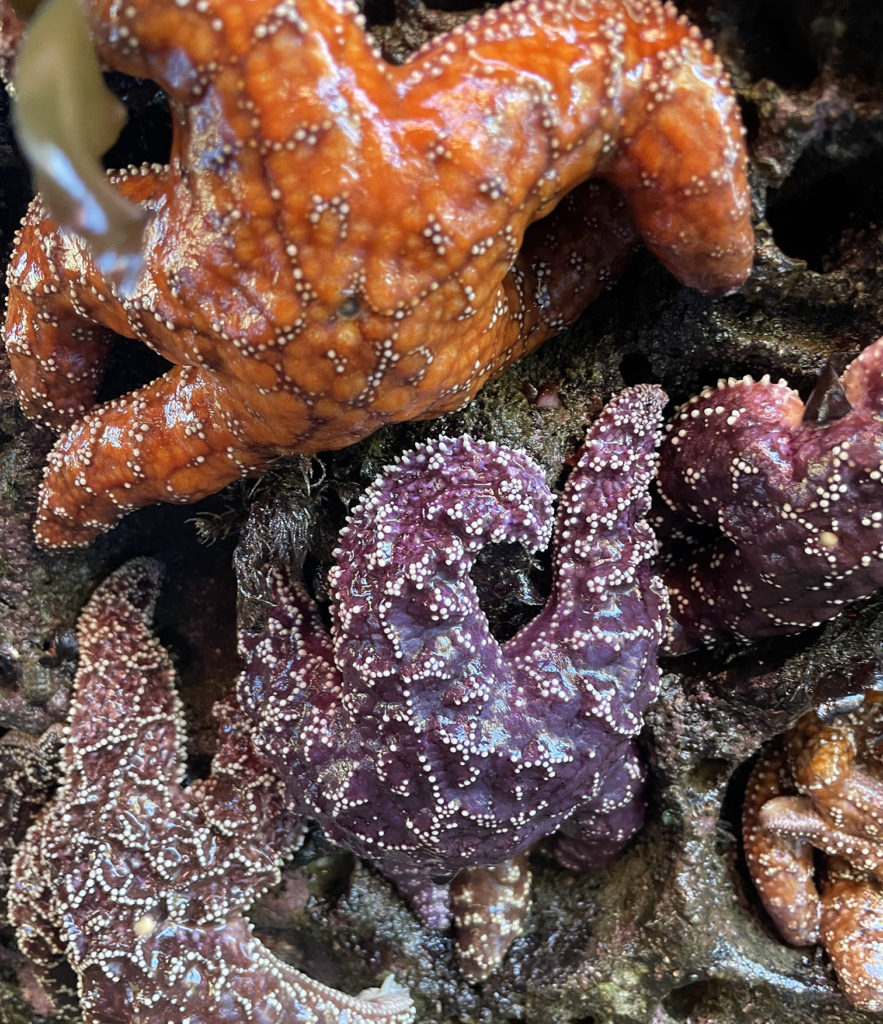
Last Minute Camping
We were planning this road trip day-by-day, which can be tricky when you’re trying to camp. Admittedly, I’m often a bit flustered if we don’t have a known spot for the night, the uncertainty weighs on me until we know. BUT at the same time we’re often able to snag sites as awesome locations because of someone’s last minute cancelation.
That’s exactly what happened on this trip. We had heard from a number of people that Sunset Bay State Park was a great location for families: camping is close to the beach, the bay’s beach is more mellow than other coastal areas, and there is abundant wildlife. We pulled up to the campground in the afternoon and were able to get a spot for the night. In total we stayed for two nights by moving to another site with a cancelation the next day.

Know the Tide Schedule
When it came to the tide pools, we couldn’t have been luckier. Our nights at the park coincided with the monthly spring tides. This is when the high tides are higher and the low tides are lower than average due to the alignment of the sun, earth, and moon.
Knowing the tide schedule is important when visiting the tide pools. The exciting animals that you’re hoping to see live in the intertidal zone. They’re exposed when the tides go out, but are covered with water when the tides come in. On average there are two low and two high tides per day, and ideally, you should head out to explore an hour or more before the tides are at their lowest. That way you’ll give yourself a few hours with low water levels.
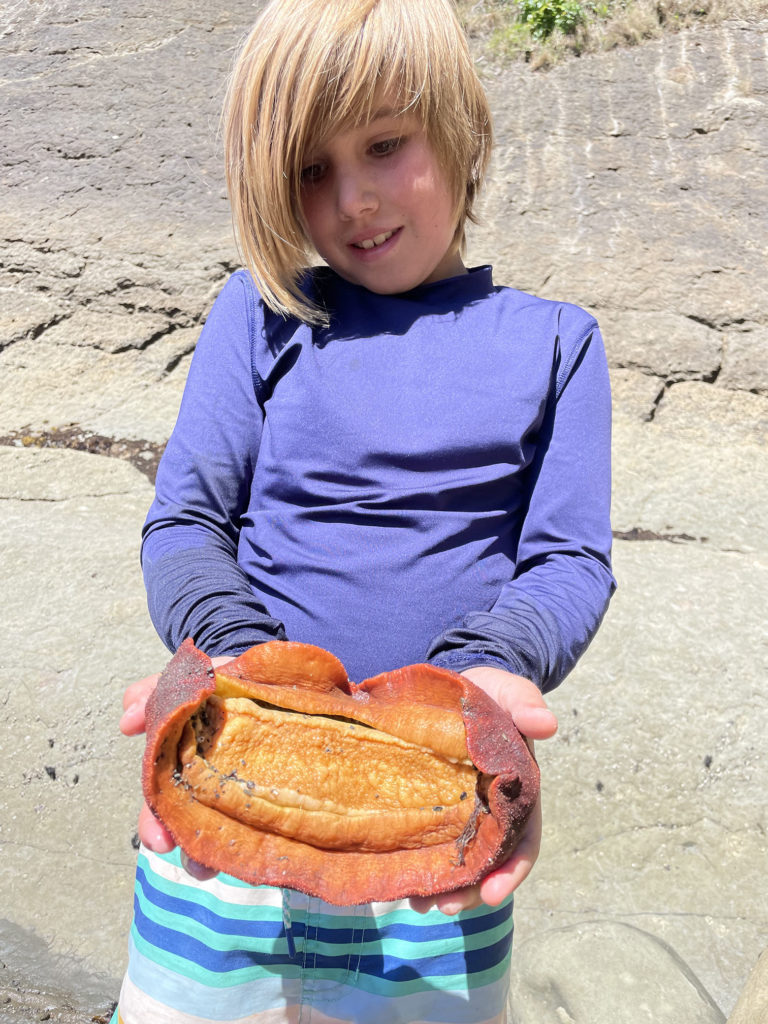
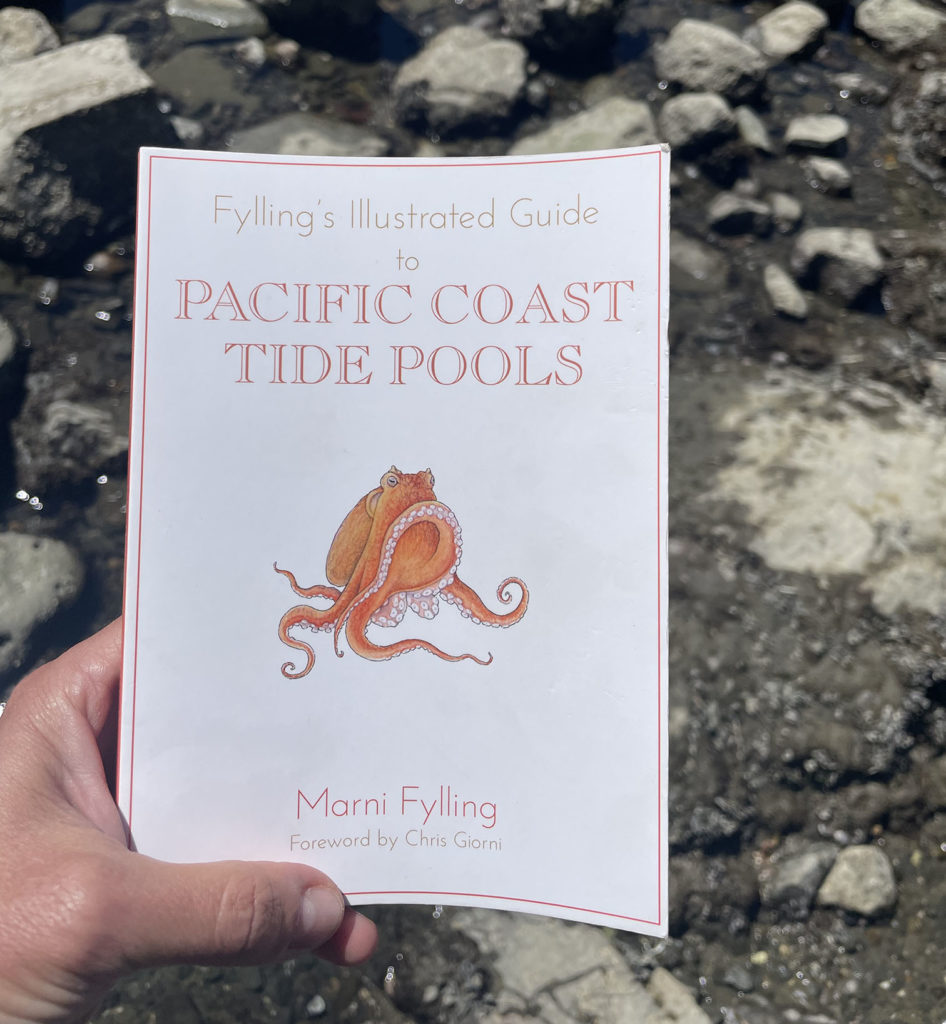
Don’t Forget the Guide Book
I said that the success of this trip was a combination of luck and planning. In addition to knowing when the tide schedule, another planning success involved bringing along the perfect little pocket guide to identify the creatures that we were seeing.
The book’s the perfect size for slipping into a backpack for a day of exploring. Given its smallish size, it was still packed with the flora and fauna found along the Pacific coast. We did a lot of exploring, and there were only a couple of creatures that saw but couldn’t identify with the book. Everything else was easy to identify and we loved reading the creature descriptions. It was just enough to satisify our interest without being too scientifically technical or niche.
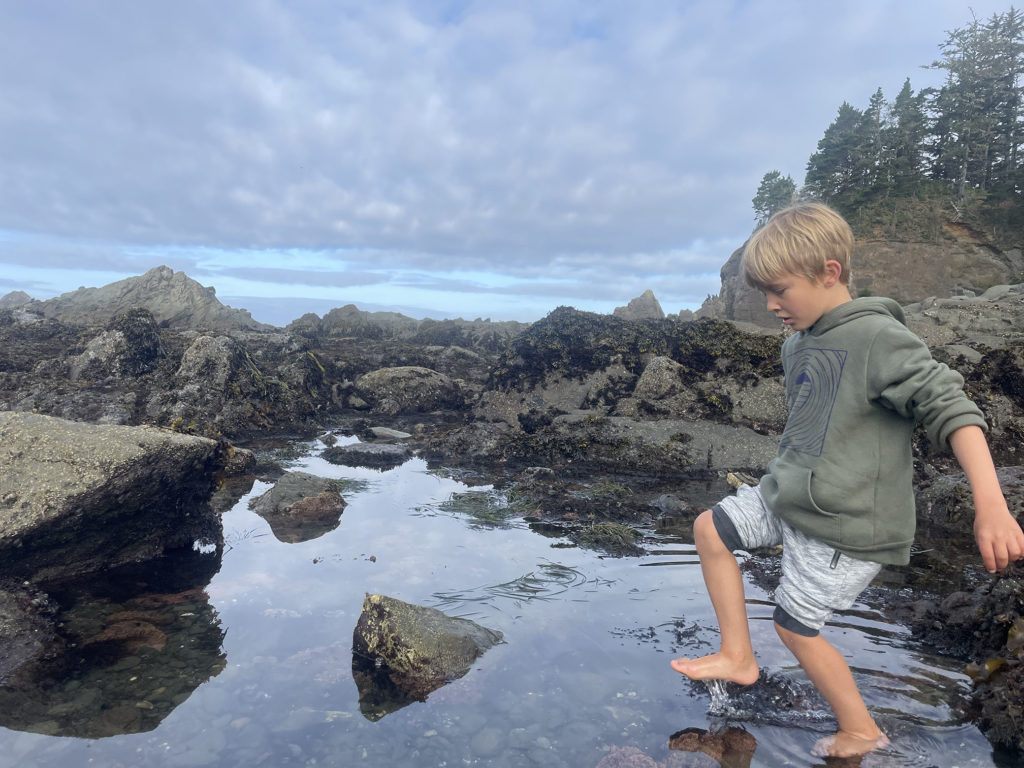
Where are your shoes?!
Ok, any responsible person will remind you that you, as another responsible person, should wear shoes while exploring the tide pools.
You should go talk to them.
We love to kick off our shoes and feel the ground beneath us. There were plenty of rocks to stand on while exploring the pools, so we were never really at risk of stepping on something sharp and cutting our feet.
And I would argue that an added bonus of being barefoot is that by being careful with where we placed our feet, we obviously weren’t stepping on any creatures. I saw plenty of people exploring the pools with shoes on, and they had not trouble walking on algae-covered rocks where you couldn’t see what (if anything) was hiding in the algae.
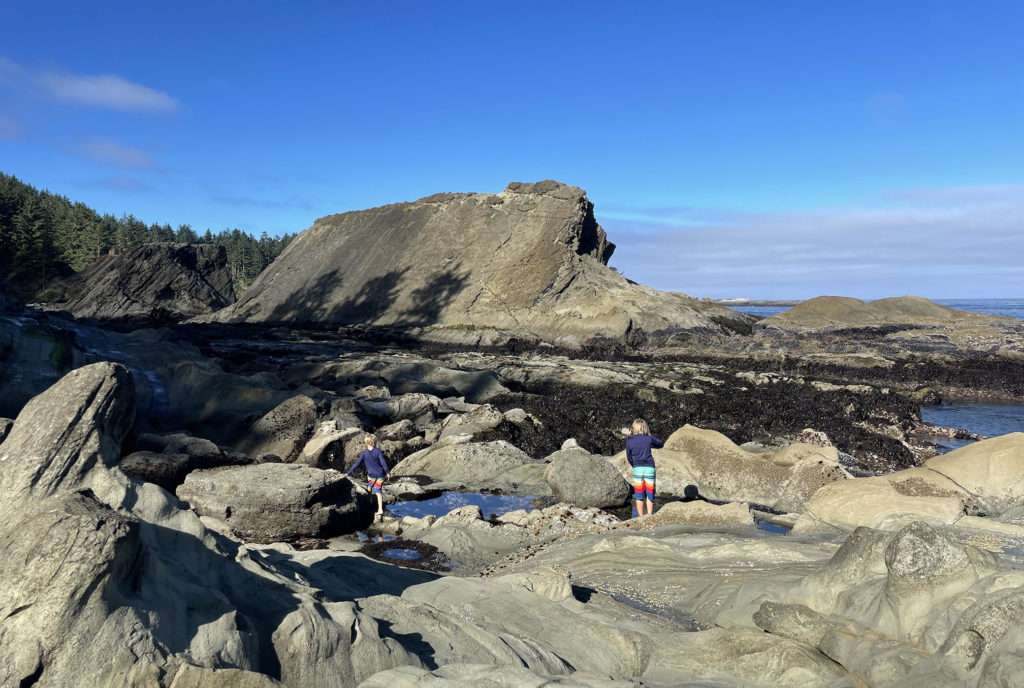
Bottom Line
If I had to summarize this experience, here’s the quick and dirty:
- There are many beaches with tide pools along the Oregon coast. We loved Sunset Bay, but it’s not the only beautiful beach with tide pools. If you have a favorite, let us know in the comments!
- Don’t forget to check the tide-charts for your beach. Getting out at low tide is crucial.
- Take along a nature guide! There are so many creatures, and it’s more fun when you know what you’re looking at.
This was my first time exploring tide pools and with just the littlest bit of planning, it was a huge success.
